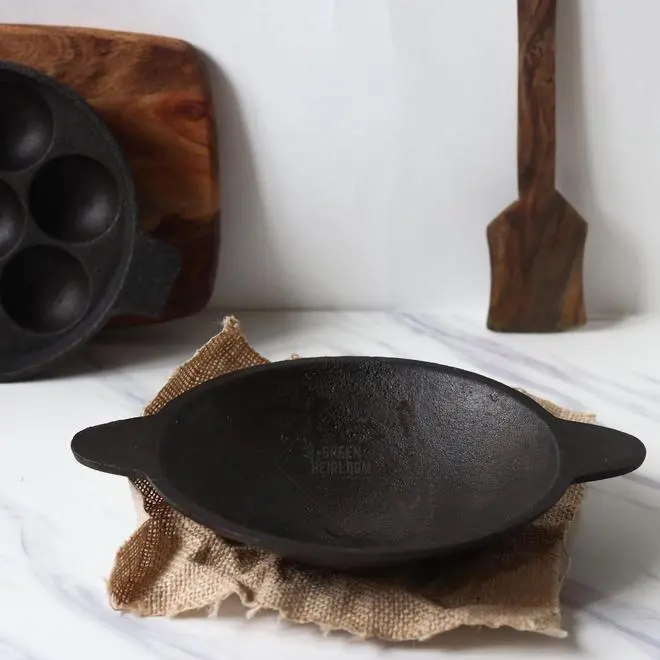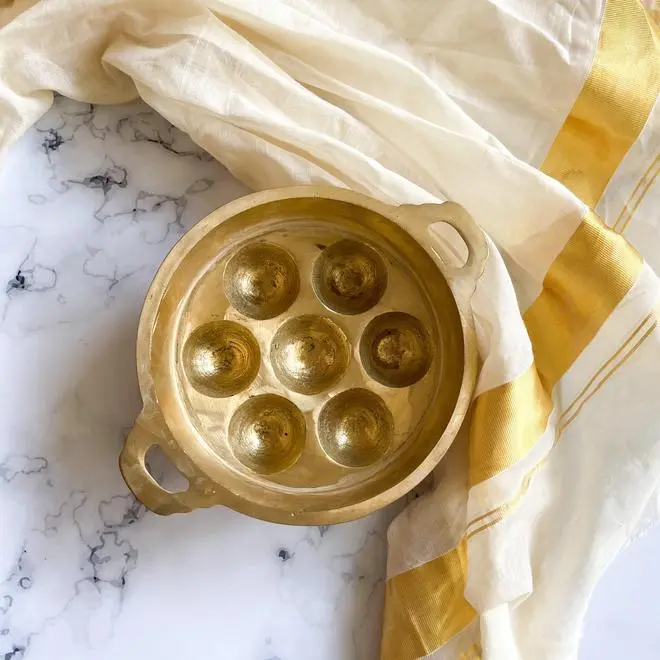At 35-year Lisha Vineeth’s home in Kochi, dishes like rasam, avial and kaalan simmer in traditional red earthen pots. She is all set for this Onam, with a range of brass urulis, chombus, and cook-and-serve claypots that hark back to another era. And no, these are not inherited heirlooms; she has bought them online, filled with nostalgia for the great-tasting curries her grandma ladled out from old claypots.
The Indian Kitchen is coming full circle. Remember those old clay and stoneware pots or the copper and brassware utensils in your ancestral homes. They are now entering modern apartments as customers seek out sustainable, eco-friendly traditional cookware and serveware.
Embracing nostalgia
India is not only getting conscious about what it eats, seeking out forgotten regional recipes, but also how it cooks. Teflon-coated non-stick pans, the favourite of the ’90s and the millennials, are going out of favour. If you follow food reels on Instagram or YouTube, you will see cast iron tawas, soapstone jars and earthen pots widely in use. A host of start-up brands like The Indus Valley, P-Tal and Green Heirloom are nudging the trend along, bringing back traditional cookware that champion local artisans, revives ancient crafts and promises health benefits.

Greenheirloom’s Cast Iron Appam Pan
Meet P-Tal (Punjab Thathera Art Legacy) — started by Aditya Agrawal, Kirti Goel and Gaurav Garg in 2019 to try and revive the dying craft of the Thatheras of Jandiala Guru near Amritsar — who manufacture brass and copper vessels. The start-up did well on Shark Tank, and its cookware, serveware and drinkware are gaining traction among consumers who advocate conscious living.

P-Tal’s recipe to attract consumers has been to tweak the traditional designs so that they fit the modern kitchens. It has a stunning portfolio of pateelas, degchis, karchis, decorative plates, cups and more.
P-Tal’s recipe to attract consumers has been to tweak the traditional designs so that they fit the modern kitchens. It has a stunning portfolio of pateelas, degchis, karchis, decorative plates, cups and more. “Many of the utensils you see are modern adaptations of the huge utensils or bhaandes that we have seen in gurudwaras or even in our homes. We have changed the design to ensure that they go well with our modern kitchens while keeping the traditional value and aesthetic of the utensils alive,” says Agrawal. The designs may be inspired from Punjab but Agrawal says customers from the South are also really embracing the products.
At the other end of the country, Kochi-based Green Heirloom, set up by Kaviya Cherian in August 2020, has a portfolio of designs oriented to Kerala cuisine. It has also developed products such as a bronze casserole and sauté pan that can be used for all kinds of cooking. She says customers in north are also lapping up their products.

Greenheirloom’s Bronze Uniappam pan
Move to sustainable
Cherian says Green Heirloom’s USP of reviving heritage has struck a strong chord with its users. “I feel the positioning of revival of heritage works very strongly for us because more and more of the young individuals who are staying in nuclear families want to get in touch with their heritage and feel closer to how their mothers and grandparents lived. These are small ways to make them feel closer even when they are living in apartments in metro cities,” she says.
Both P-Tal and Green Heirloom work closely with food influencers. P-Tal has also featured its artisans in a music video campaign and promises to cook up more innovative campaigns. The recipe for growth is clear — focus on the traditional and sustainable.








Comments
Comments have to be in English, and in full sentences. They cannot be abusive or personal. Please abide by our community guidelines for posting your comments.
We have migrated to a new commenting platform. If you are already a registered user of TheHindu Businessline and logged in, you may continue to engage with our articles. If you do not have an account please register and login to post comments. Users can access their older comments by logging into their accounts on Vuukle.